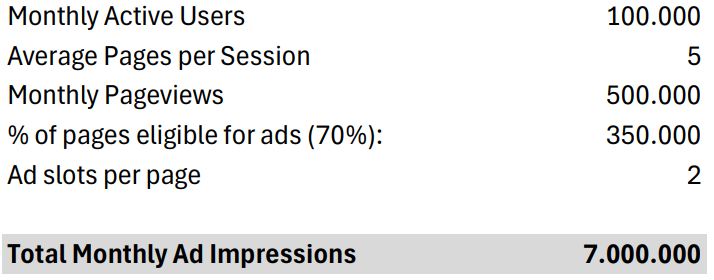Industry Overview
Standards are essential for maintaining consistency, complying with regulations, and accessing global markets. Traditionally, these standards are distributed by national and international standardization bodies, such as AFNOR, DIN, and BSI, primarily through document-based sales, including PDFs and printed materials.
However, the industry is undergoing a fundamental shift. As digital transformation accelerates across sectors, there's a growing demand for more accessible, searchable, and machine-readable standards.
Market Size and Growth
The European market for standards is vital, driven by strict regulatory requirements in key industries such as manufacturing, technology, and healthcare. Compliance with these standards is essential for companies to ensure safety, maintain quality, and remain competitive.
In Europe’s eight largest economies—France, Germany, Italy, the Netherlands, Spain, Sweden, Switzerland, and the United Kingdom—annual sales of technical standards are estimated at 200 million euros, with the total European market estimated to exceed 350 million euros.
StanHub aims to capitalize on this opportunity by strategically targeting a 15 percent market share, equivalent to 40 million euros, in technical standards within the first three years of business.
We used the revenue distribution of DIN e.v. as reference
Own income: 59.7 %
Project funds from industry (private funding): 18.1 %
Membership fees 10.0 %Project funds from the state (public funding) 12.1 %
StanHub’s initial target market is the aerospace industry, with a particular focus on high-value clients such as Airbus and its suppliers. The aerospace industry is one of the largest consumers of standards, given its stringent regulatory requirements and the need for consistent quality across the global supply chain.
With strong existing relationships in the aerospace sector, the StanHub team is well-positioned to penetrate this high-value market early.
Second Business Case: Standards-Based Advertising
In addition to revenue through selling Standards, StanHub introduces a new monetization layer through targeted advertising.
Companies that produce products compliant with specific standards—such as cable manufacturers, aerospace parts suppliers, or testing labs—can advertise directly on relevant standard pages. This creates a high-intent, high-relevance ad channel where users are actively researching compliance requirements and are more likely to engage with certified vendors.
This model benefits all sides:
Users discover relevant, certified suppliers directly within their research journey.
Advertisers gain targeted exposure to decision-makers at the point of need.
StanHub diversifies its revenue and enhances platform value without compromising user experience.
Revenue Estimation Standards-Based Advertising:
StanHub’s advertising model is built on high-intent, context-rich user engagement. As professionals use the platform to search for standards relevant to their products and compliance needs, they create a unique opportunity for advertisers to reach decision-makers at the point of need.
We estimate that, by Year 3, StanHub will attract approximately 100,000 monthly active users, generating around 700,000 monthly ad impressions.
Given the niche B2B nature of the content and the targeted audience, we project an average Cost per 1,000 Impressions of €30, resulting in an estimated monthly advertising revenue of €250,000 annually. (700,000 ÷ 1,000) × €30)
Beyond standard display ads, StanHub has strong potential for advertising upsell opportunities. These include featured placements on specific high-traffic standard pages (e.g. "EN 9100"), branded supplier listings, and industry-specific sponsorships within newsletters or content hubs. These premium ad products allow advertisers to increase visibility within precisely defined user contexts, with projected additional revenue potential of €100,000 or more per year.
Market Trends
Several key trends are shaping the standards industry and creating opportunities for StanHub:
Digitalization of Standards: There is a clear shift towards digital, machine-readable standards, driven by the need for greater interoperability and automation in various industries. This trend is supported by advancements in AI and natural language processing, which are making it easier to search, interpret, and apply standards.
Legal Push for Free Access: A recent ruling by the European Court of Justice (March 2024) determined that technical standards referenced in EU legislation must be freely accessible. This decision challenges the traditional paywall model and signals a major regulatory shift toward open access, increasing pressure on standards bodies to rethink their distribution strategies and opening the door for innovative platforms like StanHub.
Globalization and Cross-Industry Standards: As industries become more globalized, there is an increasing need for standards that are applicable across different regions and industries. This trend is driving the demand for platforms that offer access to a broad range of standards from various standardization bodies.
Competitive Analysis
The standards industry is currently dominated by traditional providers such as ISO, AFNOR, and DIN, which offer standards primarily through document-based sales models. These organizations have established a strong presence in the market, but their offerings are often seen as outdated, particularly in the context of modern digital needs.
Several new players are trying to modernize the standards industry by launching digital platforms that improve access. However, most of these still center around document delivery rather than rethinking how standards are understood and used. StanHub takes a fundamentally different approach: Our AI-powered search engine transforms static documents into contextualized knowledge. By understanding the intent behind a user’s query, it helps surface the right information faster—connecting relevant content across standardization bodies and industries.
StanHub’s primary competitive advantages include:
AI-Driven Search Engine: Unlike traditional platforms that rely on keyword-based searches, StanHub’s use of AI and natural language processing allows users to find the exact standards they need more quickly and accurately.
Seamless Workflow Integration: StanHub goes beyond search by offering advanced tools that fit directly into a company’s daily operations—such as the ability to create references to standards within internal documents, collaborate with team members, set custom alerts for updates, and manage compliance workflows—all within a unified platform.
Cross-Provider Access: StanHub consolidates standards from multiple providers, offering a one-stop shop for all standards needs, which is a significant improvement over the current fragmented landscape.


